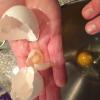Playing Throughout Life
By EmmaPSeptember 23, 2016 - 16:56

In the post “Play”, written by the user Porkchop, the author describes her early experiences of play with her three younger siblings. Their activities seem to fit perfectly within the mainstream conception of childhood play. Her and her siblings built forts, played with army toys in a sandbox, and made up their own games, into which they incorporated everything around them. The author’s description of play feels timeless, it could have easily taken place several decades ago, and free of any serious concerns. In some ways, it seems that the author has been influenced by the myth of childhood, as described by Molly Knefel in her article “Kid Stuff”. While this misconception may not seem harmful on the surface, the danger of romanticizing childhood is two-fold.








